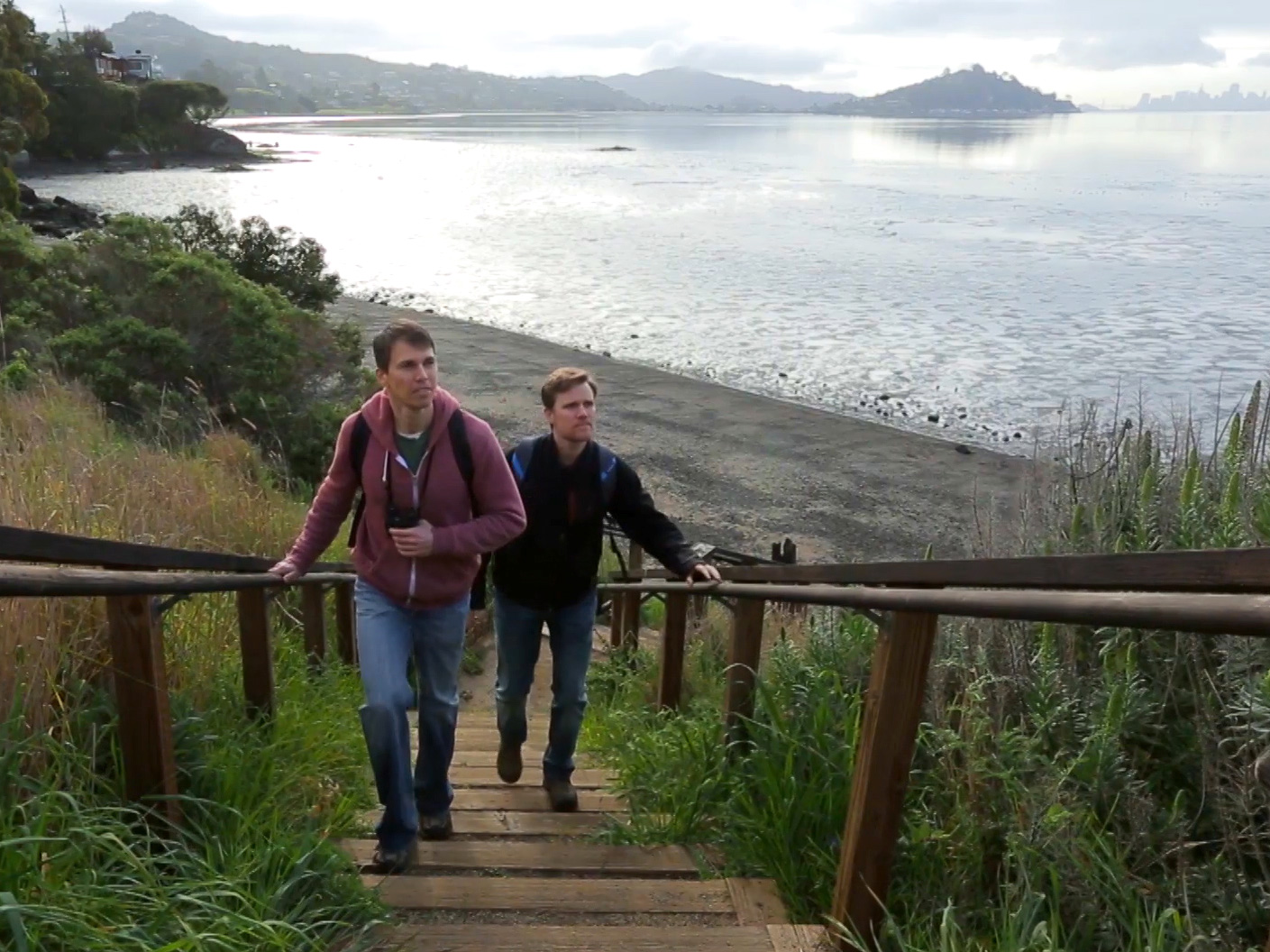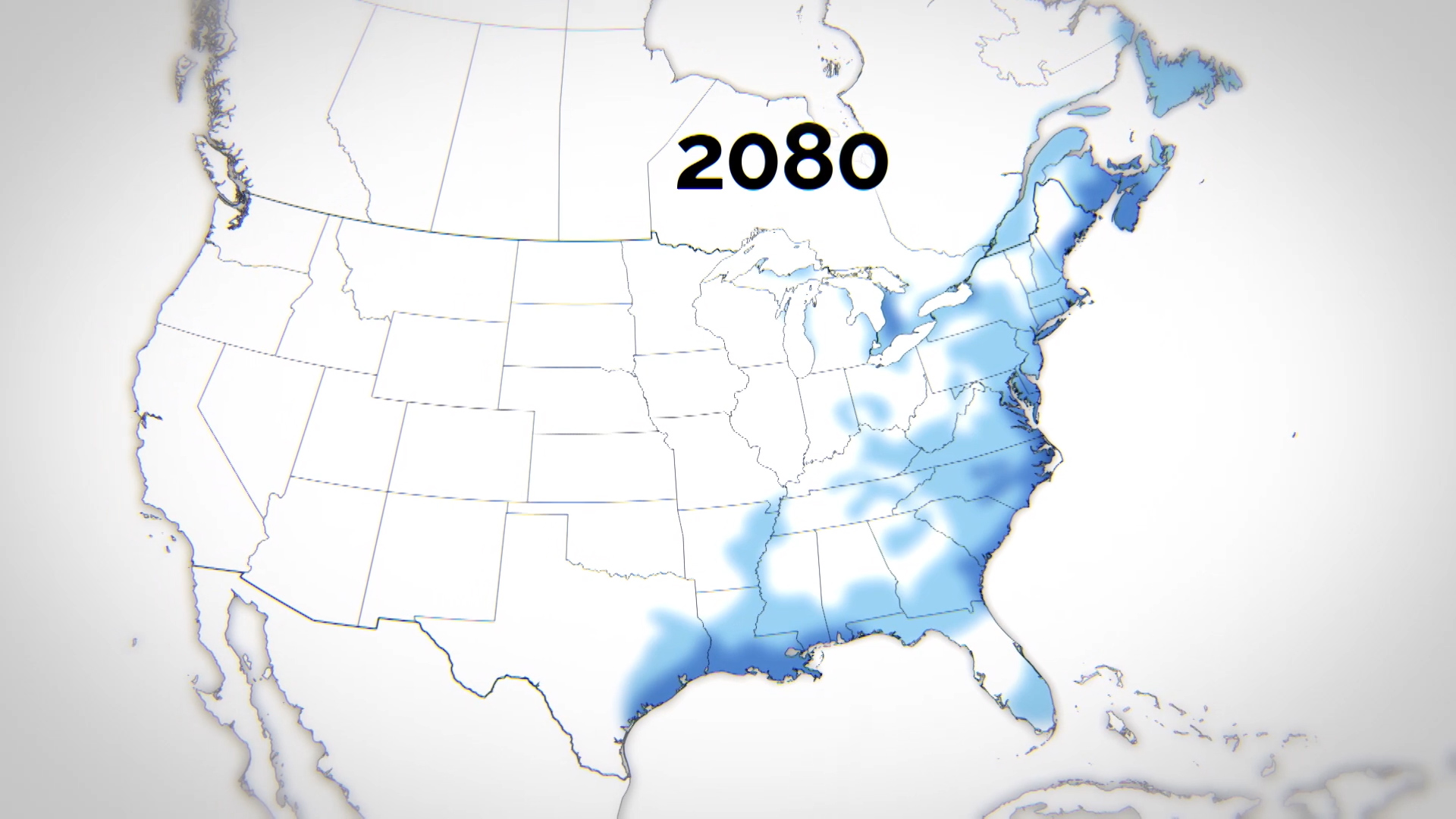
Newsletter
Sign up and stay in-the-know about The Crowd & The Cloud and the world of citizen science.


My name is Chad Wilsey, and I’m a Research Manager for the Climate Initiative at The National Audubon Society.
Tell us a little about yourself?
I’m a spatial ecologist: I apply the concepts of ecology, but on a much broader spatial scale. We are looking for patterns across a landscape, and trying to understand how natural processes shape those patterns. At Audubon, we work mostly at regional and national scales. I'm part of the national science team. We're a small group of scientists doing research across the United States. I work on spatial analysis relating to big issue topics such as climate change, land use change and most importantly trying to inform conservation activities for the organization.

Chad follows Candan Soykan as they head out for some birding.
I got interested in birding when I lived in Costa Rica. I was a teacher and I started birding in the mornings to take advantage of living in such a beautiful and amazing place. I really fell in love with it. After I moved back to the States, I started doing a lot of field research, particularly studying birds. Now that I have a daughter and am walking a lot slower, birds are a great way to interact with nature and just enjoy what you can see when you're outside.
Would you describe your work as data mining?
We use some of the tools that are used for data mining, in particular some of the machine learning methods. But a lot of our science is more driven by questions. We like to think that our work moves past that level of looking for patterns, and moves into the field of question-driven science and research. We're trying to make sense of data sets that are large in spatial and temporal scopes. We're trying to take that information and distill it into clear messages and stories.
I think the Christmas Bird Count (CBC) is very unique, both in terms of the amount of time that it spans, starting in 1900, as well as the scope of the geography, covering all of the United States, much of Canada, and Mexico. The great thing about the CBC, is that since its inception there have been records of how many people were participating, so we're able to adjust the data that we have by effort. That one piece of information can make a lot of difference in terms of how much we can use the data in terms of describing species distributions and abundances.
What motivates you to participate in the Christmas Bird Count?
My favorite thing about the Christmas Bird Count is just getting out with a group of people that's passionate about birding. A citizen scientist needs to have a certain basic understanding of the subject that they're trying to survey or explore. You learn something every time you participate, and build community by connecting with people that love birds. When I first participated in a CBC, I didn't really realize that this was something that had been going on for over 100 years. It was just a fun activity to be involved in. Now that I work at Audubon I have an appreciation for how much information we're able to get out of this annual event. I feel it's a privilege to be contributing to that effort of so many thousands of people and knowing that it's going to help us make better decisions for conserving birds in the future.
Do you think the Christmas Bird Count yields high quality data?
I think data quality is certainly a concern in the area of citizen science. We need to have certain protocols that allow us to check the quality of the data that we're receiving. I think the structure that's developed for how the CBC is conducted, provides those types of quality control measures. Every observation is essentially collected by a group, shared among a group that is participating in the CBC count for that day and double-checked by experts. Those multiple levels of quality control are really critical and also assure that we have a certain minimum level of quality in our data set. I feel confident using that data to do scientific analyses.
Who is Frank Chapman?
He started the CBC in 1900. In fact, he couldn't have imagined how useful the CBC data set would be in terms of our ability to think about the impacts of climate change on birds in the future. Having this long term data set allows us to identify the relationship between birds and climate. Once we understand that relationship, we can use it to predict how birds might be impacted by climate change in the future and that's going to be of critical value in moving bird conservation forward in the coming century.

The Audubon's comprehensive "Birds and Climate Change Report".
What is the Audubon’s “Birds and Climate Change Report”?
It is a comprehensive report looking across 588 different species of birds and trying to quantify the potential impacts of climate change on their distributions. For each of those species, we've built models for both the summer and winter seasons and thought about how changing climate in each of those species might impact the distribution of species. We found that nearly half of those 588 species may need to make dramatic shifts in response to climate change. The big question is, will these species will be able to shift their distributions and respond to climate change in the future.
Our projections suggest that nearly half of all species in North America are going to have to respond to climate change by shifting their distribution. For some species climate change may actually open up new opportunities. There's a lot of uncertainty and it requires our attention and careful consideration in our conservation efforts. For many species their current distribution simply disappears and they are forced to move into new areas that they're currently not found in. In the cases where those shifts are dramatic, we're identifying those species as "climate threatened." In addition, there may be no new areas that become suitable in the future. Those species we have classified as "climate endangered" in our report. Once we've characterized each species' preferred climate using historical data we can then use projections of future climate based on the IPCC reports to model where we expect species to be found in the future.
We know that birds are highly mobile so we would expect that they are able to shift their distributions in response to a changing climate. What we don't know is whether they're going to be able to find all the resources that they require to live and survive. It may be that their preferred food resources or nesting resources are not found or won't shift at the same rate that the bird is capable of shifting in. It's those ecological mismatches that are potentially the most threatening component of climate change.
How can the “Birds and Climate Change Report” be used to help mitigate or adapt to climate change impacts?
To help birds in the face of climate change, we can pursue conservation activities that build robust populations today because any population that's strong is going to be better able to cope with changes. But what we're also doing in Audubon, is we're trying to look across the future and identify places that are likely to be suitable for birds both today and in that uncertain future characterized by climate change and focus our efforts there. We're calling those areas "climate strongholds," and really trying to tune our conservation activities to those areas.
Even if you're not a bird lover, or an environmentalist, understanding the potential impacts of climate change on birds is important, because birds are a surrogate for ecosystems in general. If birds have the potential to be threatened by climate change, natural ecosystems in general are likely at risk due to climate change.

How Nelson's Sparrow's winter range may change by 2080.
Can you give an example of a species that will be impacted by climate change?
Our model suggests that Nelson's Sparrow is classified as climate endangered in the winter months. What that means is that areas that have suitable climates for the species today are unlikely to remain suitable into the future. This suggests that these species may be very highly impacted by climate change. This is only one of the factors that needs to be considered, particularly with Nelson's Sparrow. It's a coastal species so there are other factors likely to change, such as sea level rise, that may impact the species. There's multiple reasons to be concerned about the potential impacts of climate change on Nelson's Sparrow.
The Osprey is actually a species that might benefit from climate change, at least in the winter months. Our study has classified the Osprey as climate stable for the winter. That's because the areas of climate that are preferred by the Osprey are likely to expand during the winter months looking forward. We can expect this species to be wintering further north at the end of the century.
